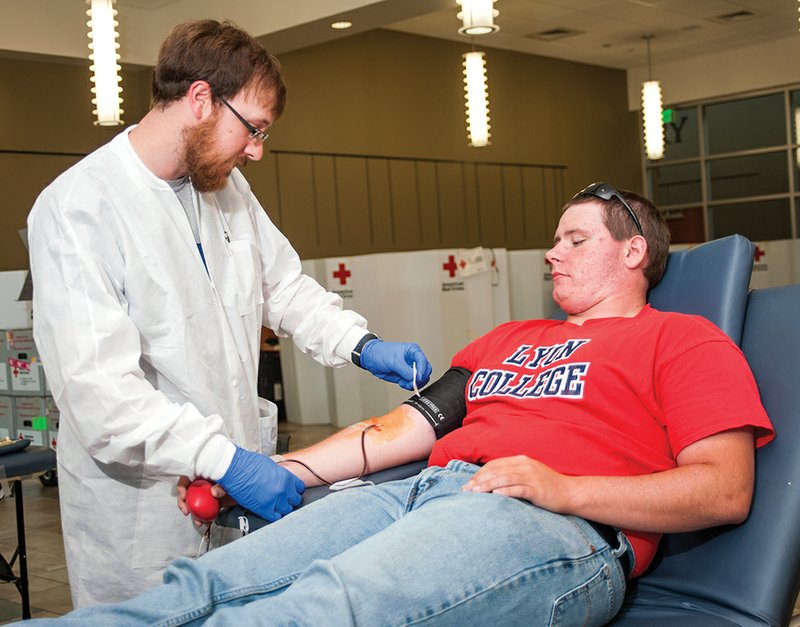When considering vacations, summer activities and taking care of children, summer schedules can be quite different than those kept during the school year. One regular activity that may be difficult to fit in is giving blood, but that doesn’t mean the need for blood donations goes away.
According to the American Red Cross, every two seconds, someone in the United States needs a blood transfusion. Up to three lives can be saved each time someone gives blood, but getting people to donate is not easy in the summer months.
“Summer is the most difficult time for us to collect donations,” said Danielle Ray, external communications manager with the Greater Ozarks-Arkansas branch of the American Red Cross. “We see less appointments and less donations.”
At a blood drive on the Lyon College campus in Batesville on July 10 and 11, the fact that the number of blood donations decreases in summer became a stark reality. Jimmy Drummond, donor-recruitment representative with the American Red Cross, said numbers have been low throughout the summer. The college’s two-day blood drive struggled to reach half of its goal, and other drives have yielded fewer donations than anticipated.
Drummond said he had made special promotional shirts and had placed signs around town for the drive at Lyon College, but the donations were still low.
According to the American Red Cross, an estimated 38 percent of U.S. residents are eligible to donate blood, but less than 10 percent donate each year. Donors are given a mini-physical before they give blood, and the actual donation takes around 10 to 12 minutes. The total process lasts around an hour and 15 minutes, including gathering medical history, the mini-physical, the donation and refreshments afterward. Any information gathered by the American Red Cross during the donation process is kept confidential.
Eighty percent of blood donations collected by the American Red Cross are given at mobile blood drives, and several local blood drives will occur in the coming weeks. The remaining 20 percent of donations are collected at American Red Cross donor centers, and the fixed location in the Three Rivers Edition coverage area is the Searcy Donor Center at 1120 S. Main St.
Ray said the American Red Cross is not experiencing a blood deficit but is working to prevent that from happening.
“We’ve broken down the summer into 100 days, so we’ve asked the public to choose one day to donate,” she said. “If we could get blood donors to commit to giving blood one of those 100 days, we can meet our patients’ needs for the summer.”
Meeting those needs is the most important aspect of giving blood, and even though donations are down in the summer, the need does not decrease.
“It’s hard for us to struggle to collect blood donations when patients are still suffering,” Ray said. “For us, the need is constant through the summer.”
Once blood is donated to the American Red Cross, the blood is processed, tested for type and infectious diseases, labeled, stored and distributed to hospitals for use.
Donors are allowed to give blood once every 56 days. Stipulations for donation have changed in recent years. Donors must be in good general health and feel well, be at least 17 years old and weigh at least 110 pounds. Other stipulations can be seen at www.redcrossblood.org/donating-blood/eligibility-requirements.
To make an appointment to donate blood or for more information, call (800) RED-CROSS or visit www.redcrossblood.org.
Staff writer Angela Spencer can be reached at (501) 244-4307 or aspencer@arkansasonline.com.
